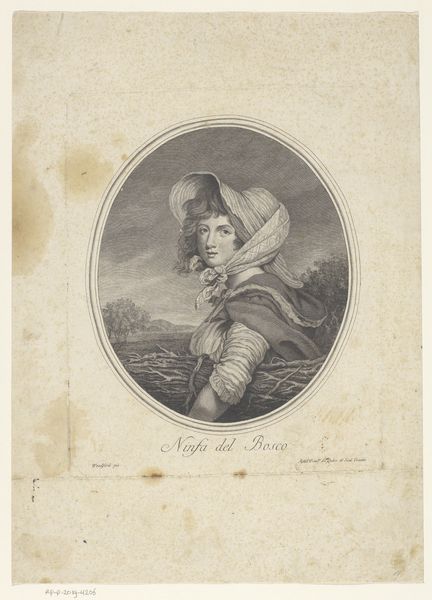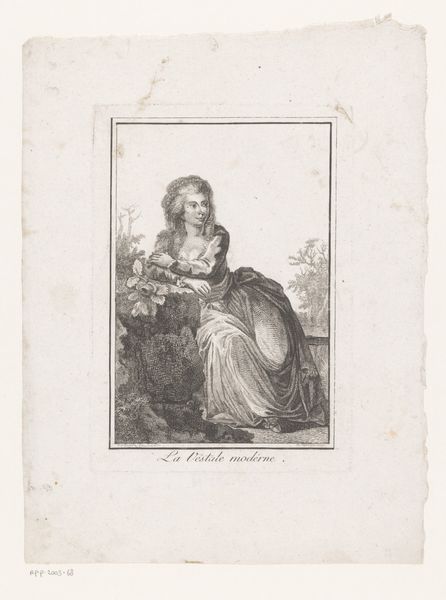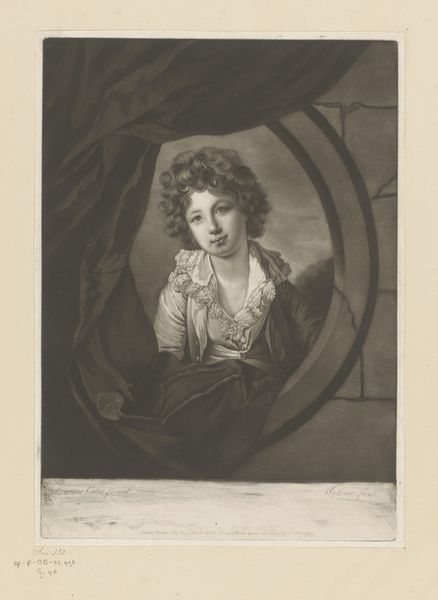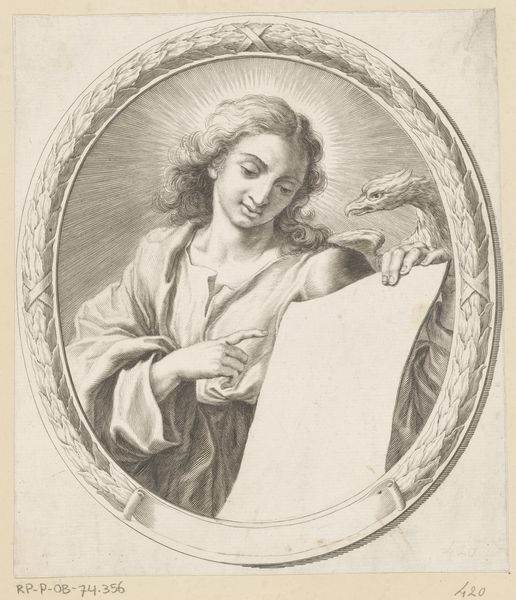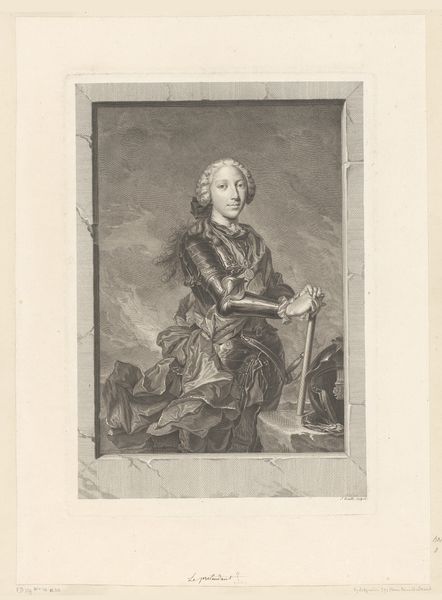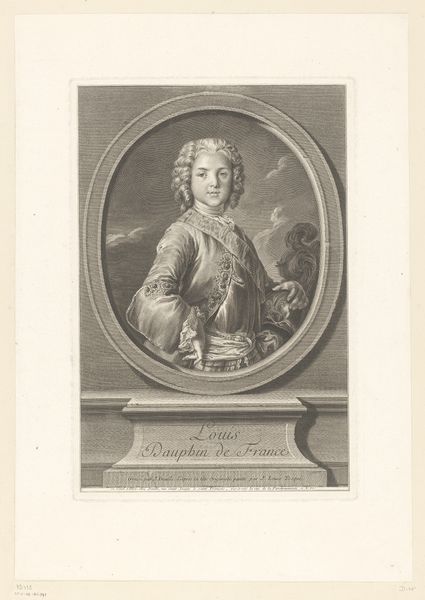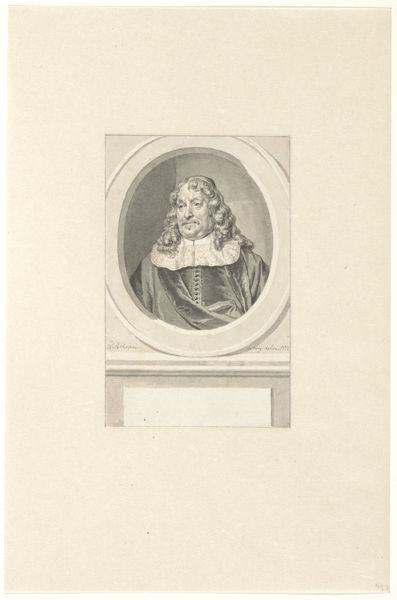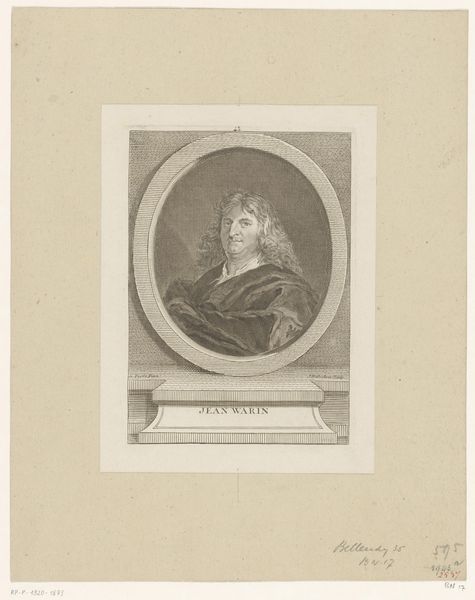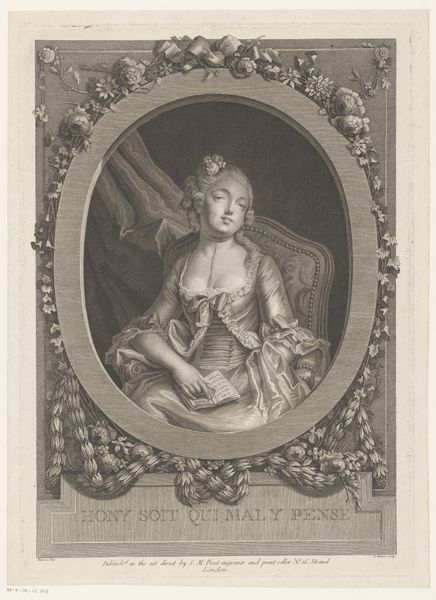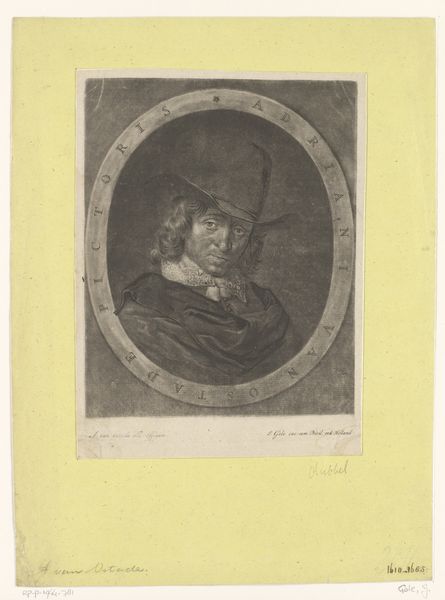
Dimensions: height 327 mm, width 225 mm
Copyright: Rijks Museum: Open Domain
Editor: This engraving is entitled “Laughing Man with a Violin” or “The Humorous Fiddler” by Jonathan Spilsbury, created in 1767. It immediately strikes me as a Baroque caricature; his exaggerated expression almost leaps off the page. What formal qualities stand out to you? Curator: Focusing on its structure, I'm drawn to how the oval frame contrasts with the dynamic pose of the figure. Notice how Spilsbury uses light and shadow, the chiaroscuro effect, to sculpt the man's face. The lines are meticulously rendered, but the overall effect is one of spontaneity. Editor: Yes, the use of light definitely enhances the texture and the dramatic feel. Are there any particular elements that signify Spilsbury’s artistic style within this composition? Curator: Certainly. Spilsbury, though associated with portraiture, plays with the conventions here. Consider how the diagonal of the violin and bow cuts across the composition, creating a sense of movement. It deviates from the static poses common in more formal portraits, don't you think? It’s a very active Baroque. Editor: Absolutely, and the texture of his clothing, especially the feathered hat, creates a wonderful sense of depth despite the limitations of engraving. Curator: Precisely. The visual elements such as line, light, and form guide the eye and create an engaging image. It proves that even within the seemingly rigid structure of engraving, artists can push boundaries. Editor: I agree; analyzing its visual construction definitely adds depth to appreciating this piece. Thank you. Curator: My pleasure. It’s in deconstructing such visual strategies that we truly understand the artwork’s expressive power.
Comments
No comments
Be the first to comment and join the conversation on the ultimate creative platform.
